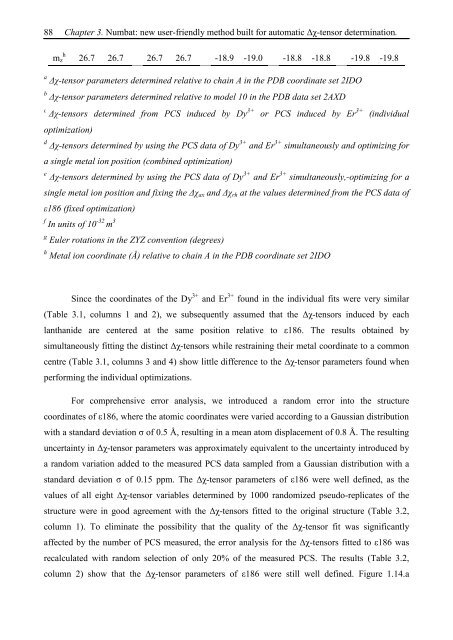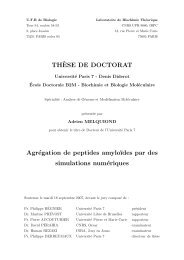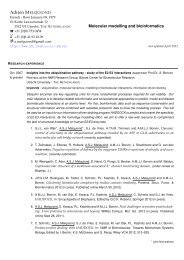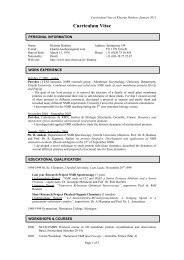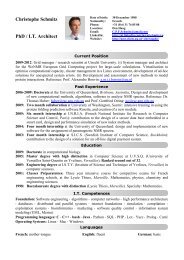Thesis Title: Subtitle - NMR Spectroscopy Research Group
Thesis Title: Subtitle - NMR Spectroscopy Research Group
Thesis Title: Subtitle - NMR Spectroscopy Research Group
You also want an ePaper? Increase the reach of your titles
YUMPU automatically turns print PDFs into web optimized ePapers that Google loves.
88 Chapter 3. Numbat: new user-friendly method built for automatic Δχ-tensor determination.<br />
mz h 26.7 26.7 26.7 26.7 -18.9 -19.0 -18.8 -18.8 -19.8 -19.8<br />
a Δχ-tensor parameters determined relative to chain A in the PDB coordinate set 2IDO<br />
b Δχ-tensor parameters determined relative to model 10 in the PDB data set 2AXD<br />
c Δχ-tensors determined from PCS induced by Dy 3+ or PCS induced by Er 3+ (individual<br />
optimization)<br />
d Δχ-tensors determined by using the PCS data of Dy 3+ and Er 3+ simultaneously and optimizing for<br />
a single metal ion position (combined optimization)<br />
e Δχ-tensors determined by using the PCS data of Dy 3+ and Er 3+ simultaneously, optimizing for a<br />
single metal ion position and fixing the Δχax and Δχrh at the values determined from the PCS data of<br />
ε186 (fixed optimization)<br />
f In units of 10 -32 m 3<br />
g Euler rotations in the ZYZ convention (degrees)<br />
h Metal ion coordinate (Å) relative to chain A in the PDB coordinate set 2IDO<br />
Since the coordinates of the Dy 3+ and Er 3+ found in the individual fits were very similar<br />
(Table 3.1, columns 1 and 2), we subsequently assumed that the Δχ-tensors induced by each<br />
lanthanide are centered at the same position relative to ε186. The results obtained by<br />
simultaneously fitting the distinct Δχ-tensors while restraining their metal coordinate to a common<br />
centre (Table 3.1, columns 3 and 4) show little difference to the Δχ-tensor parameters found when<br />
performing the individual optimizations.<br />
For comprehensive error analysis, we introduced a random error into the structure<br />
coordinates of ε186, where the atomic coordinates were varied according to a Gaussian distribution<br />
with a standard deviation ζ of 0.5 Å, resulting in a mean atom displacement of 0.8 Å. The resulting<br />
uncertainty in Δχ-tensor parameters was approximately equivalent to the uncertainty introduced by<br />
a random variation added to the measured PCS data sampled from a Gaussian distribution with a<br />
standard deviation ζ of 0.15 ppm. The Δχ-tensor parameters of ε186 were well defined, as the<br />
values of all eight Δχ-tensor variables determined by 1000 randomized pseudo-replicates of the<br />
structure were in good agreement with the Δχ-tensors fitted to the original structure (Table 3.2,<br />
column 1). To eliminate the possibility that the quality of the Δχ-tensor fit was significantly<br />
affected by the number of PCS measured, the error analysis for the Δχ-tensors fitted to ε186 was<br />
recalculated with random selection of only 20% of the measured PCS. The results (Table 3.2,<br />
column 2) show that the Δχ-tensor parameters of ε186 were still well defined. Figure 1.14.a


